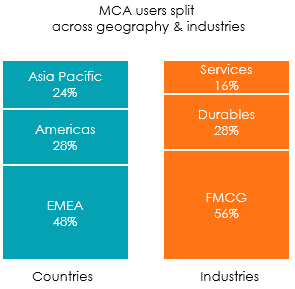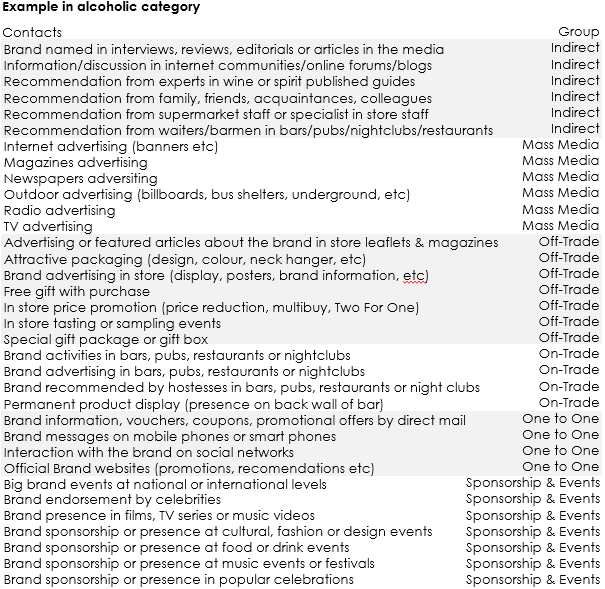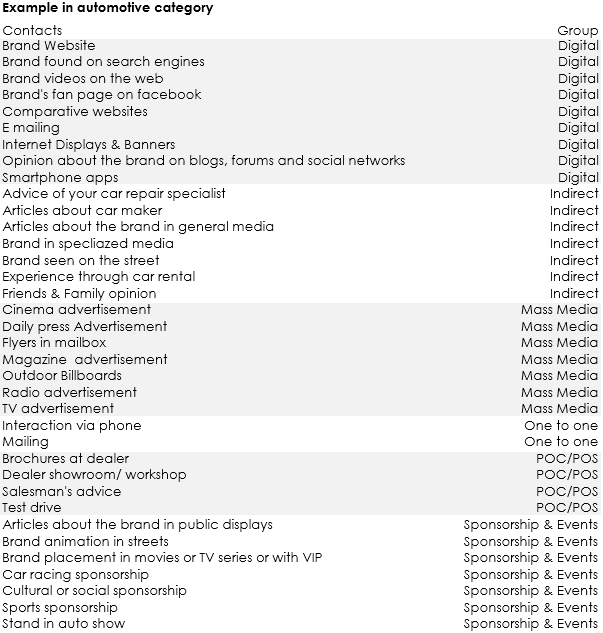Below are 7 compelling reasons for choosing the ROI MARKETING Touch Point Model® with MCA® inside for your marketing effectiveness audit.
#1 MCA® is worldwide leading approach for measuring the holistic impact of brand’s activation plans
Typically used by Fortune 500 companies, it can be deployed in any category (both B2C and B2B) and in any market globally.
Since its launch, more than 1800 MCA® audits have been conducted, covering 32.000 brands in more than 500 categories. MCA® has surveyed more than 2 million consumers in 65 countries and 40 languages.

The MCA® technology has been independently validated by:
- INSEAD, Chattopadhyay and Banerjee (2001)
- ARF (Advertising Research Foundation), Cook (2007)
#2 MCA® is the only tool capable of embracing all possible touch points
As it takes into account literally every possible activation (media, digital, point of sale, sponsoring, PR, WOM, CRM, etc..), outputs can be delivered in the form that makes the most sense to your organization (ATL / BTL, on/off, Paid Owned Earned, etc..).


#3 MCA® provides users with comparable data across markets and over time
MCA®’s major innovation is to propose a common currency to compare the impact of brands’ diverse marketing and communication initiatives. The common currency approach extends across markets and over time, allowing global brands to have at the same time common learnings, country-specific best practices or issues identified and a tracking tool to monitor performance year on year.
#4 MCA® fixes the inherent weaknesses of econometric modelling
| Econometric Modeling | MCA (Touchpoint) |
| Efficiency focus, aims at fine-tuning existing mix | → Effectiveness focus, helps thinking outside the box, provides directional strategic insights |
| Based on input measure (what consumers receive) | → Provides an outcome indicator as it measures what consumers perceiveAlso provides efficiency metrics (Cost/BEP) to compare efficiency performance across the mix |
| Depends on availability of historical data Issue 1: Some touch points have no or limited historical data, yet they are influential (indirect, POS, sponsoring, …). So by construct, many touchpoints are excluded for MMM. Issue 2: Historical data may prove an unreliable guide to future returns |
→ Generates its own customer-based data |
| No readings on specific segments | → Possible readings on customer segments) |
| Usually includes other variables than communication, like price, seasonality, etc. to achieve acceptable correlation with sales | → Concentrates only on touch points and treats sales mix apart |
| Often monadic approach, since historical data on competition is very non existent or very scarce | → Includes competitive assessment |
| Takes time to implement | → Easy to deploy (data, cost & time) → Results can be obtained in less than 3 months for the first reading, one month for future readings |
#5 The Touch Point Model® with MCA® inside is easy, fast and cost efficient to deploy
- 500 interviews per market, carried out on-line in most countries
- All key brands in any given category
- Up to 36 touchpoints tested
- Results can be obtained in less than 3 months for the initial reading and 1 month for subsequent readings
- Economies of scale for global deployment
#6 The Touch Point Model® with MCA® inside is the only solution that goes beyond the audit of touchpoint strategies
Poor allocation of investments is only one cause of ineffective marketing and communications, which may also come from:
- Poor execution of actions
- Distribution not adapted to the brand’s ambitions
- Weak product offer
- Not relevant brand positioning
- Lack of visibility vis-à-vis bottlenecks in the brand’s sales funnel
- Deficient pricing strategy
The Touch Point Model® is the first solution that combines a brand assessment with the MCA® touchpoint module, allowing to take into account the various causes of ineffective marketing, over and above inadequate resource allocation.
#7 The Touch Point Model® with MCA® inside is a profitable investment
Implementing the approach typically yields 20 % improvement in return on brand experience.

